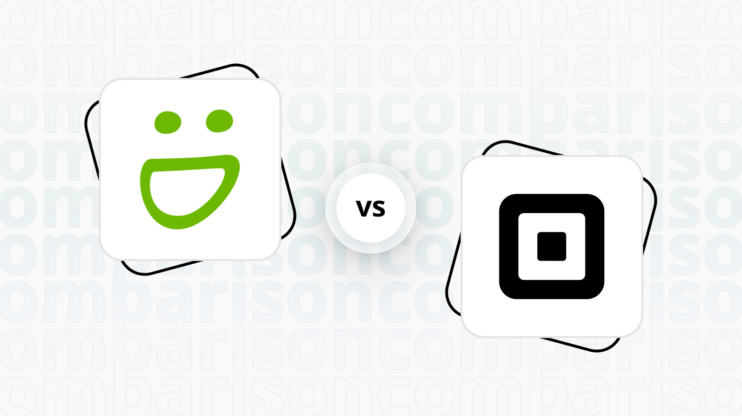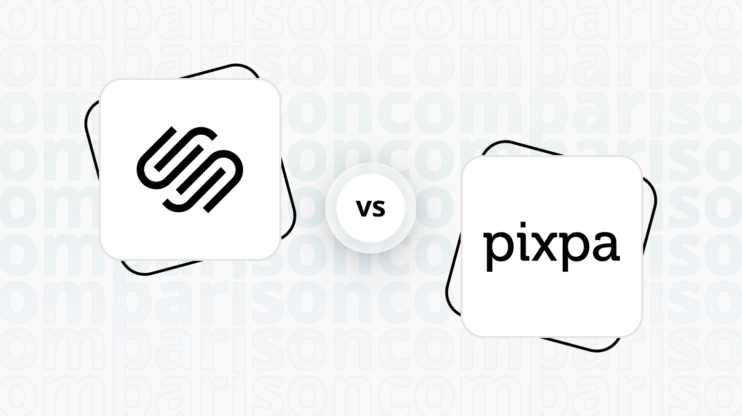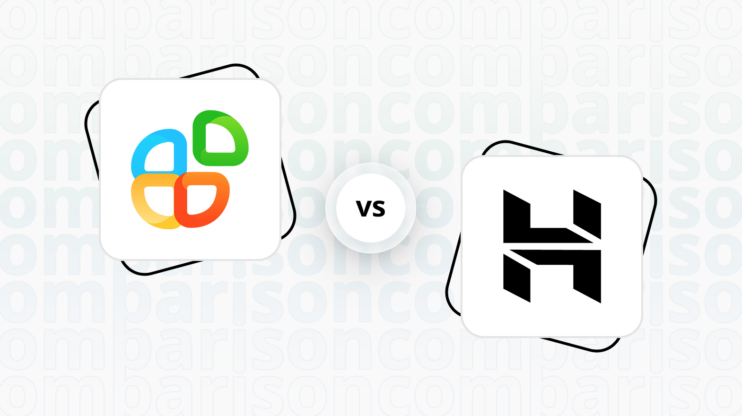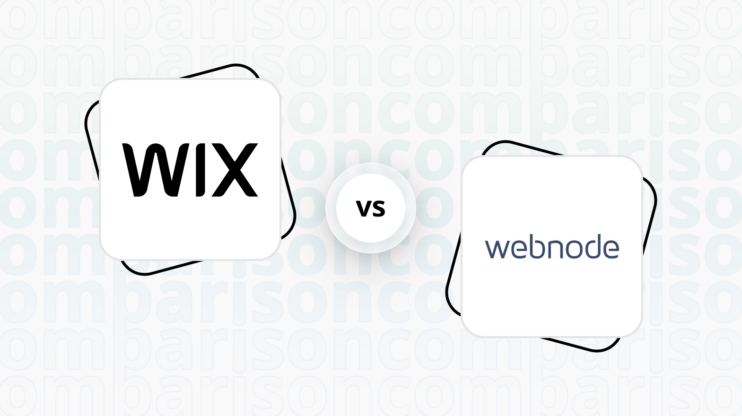Final verdict
Shopify and Adobe Portfolio cater to different needs, making them suitable for distinct user bases.
-
Shopify (Overall Grade: 8.1/10)
is a robust ecommerce platform designed for businesses looking to create and manage online stores. It excels in providing comprehensive ecommerce features, advanced marketing tools, and strong security measures. When comparing Shopify vs Adobe Portfolio, Shopify is the clear choice for users who need a powerful, scalable solution for online sales and business growth. -
Adobe Portfolio (Overall Grade: 5.5/10)
is tailored for creative professionals who want to showcase their work in a visually appealing manner. It offers an intuitive interface, seamless integration with Adobe Creative Cloud, and a variety of customizable templates. Considering Shopify vs Adobe Portfolio, Adobe Portfolio is ideal for photographers, graphic designers, and artists who prioritize design and ease of use over ecommerce functionalities.

|

|
|
|---|---|---|
|
Design functionalities & templates |
8.2 |
7.4 |
|
Ease of use |
7.5 |
8.7 |
|
Ecommerce |
9.2 |
0.0 |
|
Website Editors |
7.9 |
7.4 |
|
Product testing options |
8.1 |
7.6 |
|
Price |
8.2 |
7.7 |
|
Hosting quality |
9.0 |
7.0 |
|
Website speed optimization |
7.8 |
6.2 |
|
Plugins and integrations |
8.7 |
6.7 |
|
Marketing features |
8.8 |
3.7 |
|
Customer support |
8.6 |
7.3 |
|
Security |
9.0 |
8.1 |
|
AI capabilities |
7.9 |
0 |
|
User Management |
6.5 |
3.0 |
Best for ecommerce
 9.2
9.2
 0.0
0.0
Verdict
: When comparing Shopify vs Adobe Portfolio for ecommerce, Shopify is the clear winner. Shopify’s extensive ecommerce features make it ideal for online businesses, while Adobe Portfolio lacks any ecommerce capabilities.
-
Shopify
: Shopify is a robust ecommerce platform that offers a comprehensive set of tools for online businesses. It includes features like advanced inventory management, multi-channel selling, and detailed analytics. Shopify Payments simplifies the payment process, and the platform supports a wide range of payment gateways. With its extensive library of apps, Shopify provides additional functionalities such as reviews, Facebook stores, and even Augmented Reality for an enhanced customer experience. Its ecommerce score is 9.2. -
Adobe Portfolio
: Adobe Portfolio is designed for creative professionals to showcase their work and does not support ecommerce functionalities. It is ideal for photographers, graphic designers, and artists looking to build a professional online presence. However, it lacks the tools necessary for creating and managing an online store. Its ecommerce score is 0.0.
Best for informational & business websites
 6.8
6.8
 7.4
7.4
Verdict
: Adobe Portfolio is better suited for creating visually appealing informational websites, especially for creative professionals, while Shopify, though capable, is more tailored for ecommerce purposes.
-
Shopify
: Shopify, primarily an ecommerce platform, can be used for informational websites but may feel overly complex for such needs. Its templates are sleek and professional, ideal for online stores, but less so for simple informational sites. Shopify’s score of 6.8 reflects its ecommerce-centric design, which might not be the best fit for purely informational purposes. -
Adobe Portfolio
: Adobe Portfolio excels in creating visually stunning websites for creative professionals. With a score of 7.4, it offers a user-friendly interface and seamless integration with Adobe Creative Cloud, making it easy to showcase work without coding. Adobe Portfolio’s templates are designed to highlight creative projects, making it an excellent choice for photographers, designers, and artists. When comparing Shopify vs Adobe Portfolio, Adobe Portfolio stands out for its ease of use and design flexibility for informational sites.
Detailed comparison
Design functionalities & templates
Design FunctionalitiesRepresents how well each platform allows for creative design and customization of websites.Score Components:
- Template Variety (30%): Range and quality of design templates.
- Customization (30%): Flexibility and options for design alterations.
- User Interface (20%): Ease and intuitiveness of the design process.
- Responsiveness (10%): Adaptability to different devices and screen sizes.
- Innovation (10%): Unique design features and tools.
 8.2
8.2
 7.4
7.4
🏆
Winner: Shopify.
If you’re looking for a platform that offers more professional and ecommerce-focused templates, Shopify is the preferred choice.
Shopify’s templates are sleek and professional, ideal for ecommerce sites. They offer a sophisticated look with a focus on online stores. While the free template selection is not large, Shopify’s premium theme store provides a variety of industry-specific options, offering advanced features for a strong brand presence.
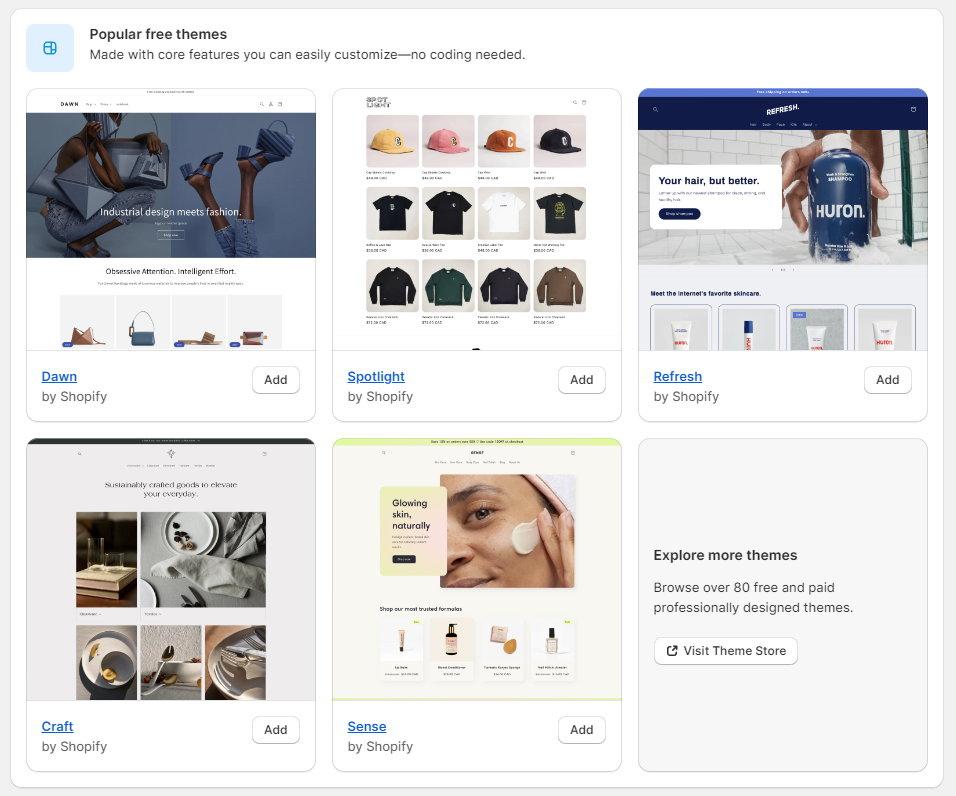
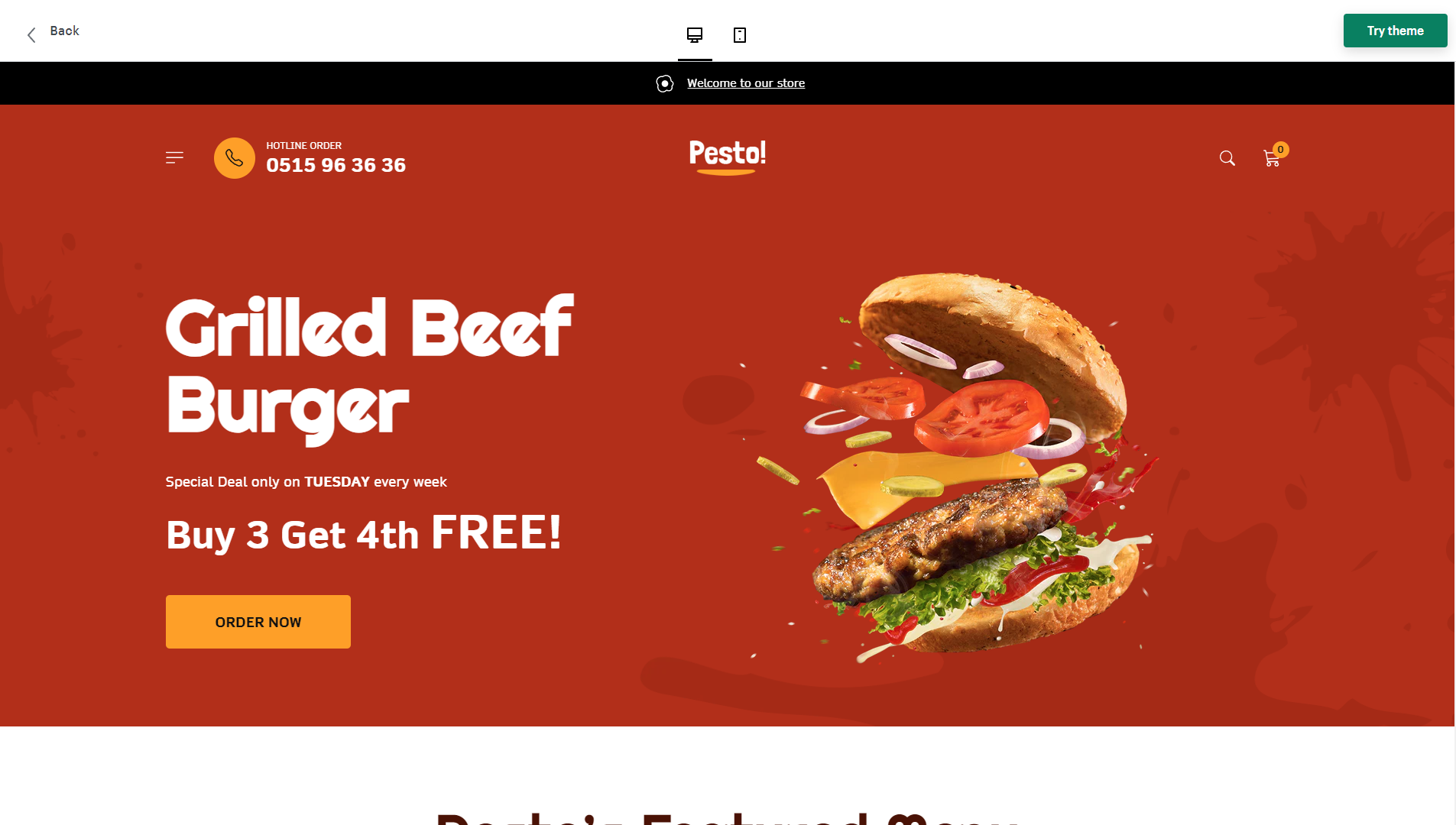
Compared to Shopify, Adobe Portfolio offers a selection of customizable templates designed for creatives across various fields, such as photography, graphic design, and web design. These templates are responsive and tailored to showcase creative work effectively across all devices. With the intention of adding more layouts over time, Adobe Portfolio provides a flexible foundation for users to personalize and present their projects in a polished manner.
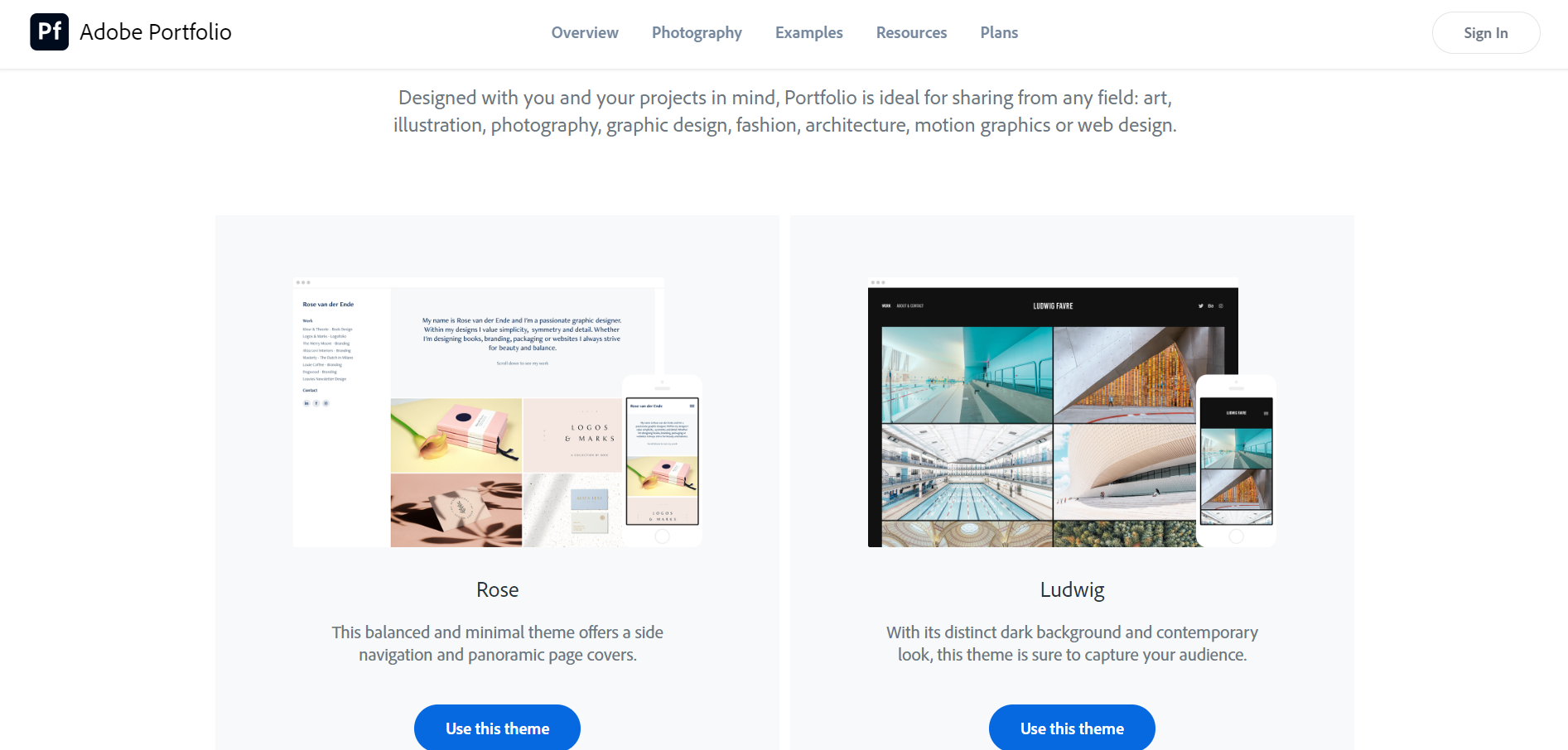
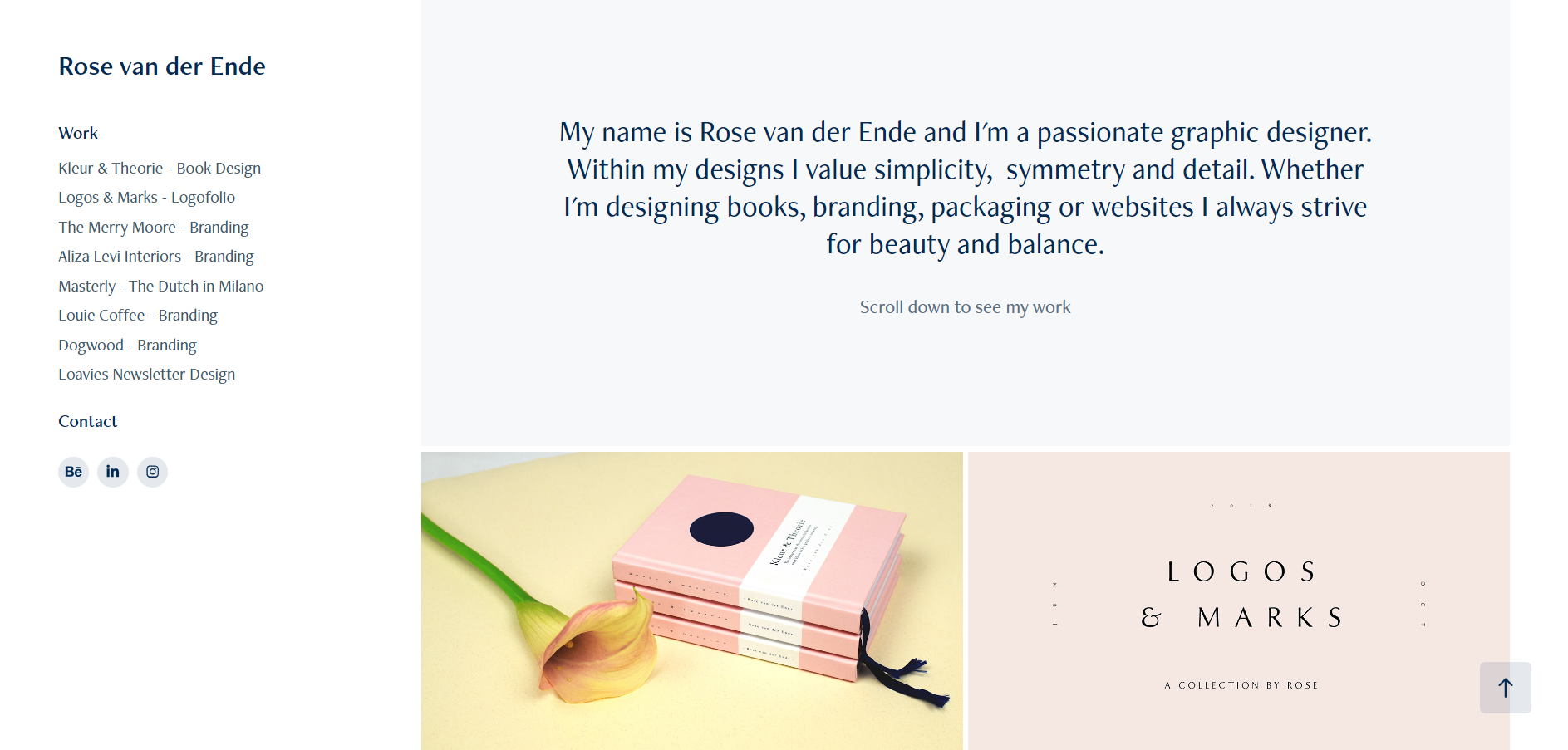
Get a head start on website creation with AI
Create a custom website tailored to your business needs 10X faster with 10Web AI Website Builder!
Ease of use
Ease of useReflects the platform’s overall user-friendliness.Score
Components:
- Learning curve (40%): Quickness and ease of getting started.
- Interface design (30%): Simplicity and intuitiveness of layout.
- User guidance (20%): Quality of tutorials and support.
- Flexibility (10%): Adaptability to various user skills.
 7.5
7.5
 8.7
8.7
🏆 Winner: Adobe Portfolio
. With a score of 8.7, Adobe Portfolio edges out Shopify (7.5) in terms of ease of use. Adobe Portfolio’s user-friendly interface and seamless integration with Adobe Creative Cloud make it an ideal choice for creative professionals looking to showcase their work. Shopify, while praised for its ease of use, has a steeper learning curve, especially for those new to ecommerce.
Learning Resources
🏆 Winner: Adobe Portfolio
. Both platforms offer extensive learning resources, but Adobe Portfolio’s resources are more varied and cover a broader spectrum of topics, from basic setup to advanced customization. This makes Adobe Portfolio a more accessible platform for users at all levels of experience.
For ecommerce
EcommerceMeasures the platform’s effectiveness in supporting online business activities.Score Components:
- Ecommerce themes and templates (20%): Variety and design of templates.
- Product management (25%): Ease of managing and organizing products.
- Payment options (25%): Variety and convenience of payment methods.
- Ecommerce features (20%): Features for managing an ecommerce store.
- Integration (10%): Compatibility with external e-commerce tools and services.
 9.2
9.2
 0.0
0.0
When it comes to ecommerce, Shopify is a clear winner. It is a dedicated ecommerce platform that provides a comprehensive set of features for online businesses. On the other hand, Adobe Portfolio is a website builder designed for creative professionals to showcase their work and does not have ecommerce capabilities.

|

|
|
|---|---|---|
|
Ecommerce themes and templates |
8.2 |
0.0 |
|
Product page customization |
8.5 |
0.0 |
|
Payment processing and commissions |
8.8 |
0.0 |
|
POS capabilities |
8.1 |
0.0 |
|
Payment gateways |
9.5 |
0.0 |
|
Product numbers |
9.0 |
0.0 |
|
Additional ecommerce features |
9.1 |
0.0 |
Shopify ecommerce features:
- Comprehensive store builder
- Shopify Payments and other gateways
- Advanced inventory management
- Multi-channel selling
- Abandoned cart recovery
- Detailed analytics and reporting
Adobe Portfolio does not have any ecommerce features. It is designed for creative professionals to showcase their work and does not provide tools for creating and managing an online store.
Ecommerce themes & templates
Shopify offers about 150 modern responsive themes for creating a virtual storefront, ensuring a good look on both desktop and mobile devices. While some themes are free, others cost between $170 to $380. Adobe Portfolio does not have any ecommerce specific templates.
Product page customization
Shopify has a limit of three options per product, totaling 100 unique variations. This limit may not pose a significant constraint, and it is suggested that for products with numerous options, creating separate listings on Shopify can be a more manageable approach. While Shopify offers titles, descriptions, and image galleries with zoom effects, customization options like adding ribbons, size charts, and wishlists are not as straightforward. However, Shopify distinguishes itself with additional features through its extensive library of extra apps, offering functionalities like reviews, Facebook stores, eBay item importers, and a unique Augmented Reality feature for an enhanced customer experience. Adobe Portfolio does not have product page customization features.
Payment processing
Shopify offers payments with typical charges of 2.9% + 30¢ per online transaction on basic plans, and lower fees for higher-tier plans. However, it adds extra fees for using other payment gateways. Shopify Payments is Shopify’s own payment processing gateway. It allows merchants to accept credit card payments directly on their store without having to integrate third-party payment providers. This simplifies the payment process, reduces transaction fees, and streamlines the handling of finances. Adobe Portfolio does not have any payment processing capabilities.
Website Editors
Website EditorsEvaluates the platforms’ website building and editing capabilities.Score Components:
- Customization tools (40%): Range and power of editing features.
- Editor usability (30%): User experience within the editor.
- Design flexibility (20%): Freedom in layout and design changes.
- Update and maintenance ease (10%): Simplicity of updating and maintaining the site.
 7.9
7.9
 7.4
7.4
🏆
Winner: Shopify
. Shopify, with a score of 7.9, excels in providing a streamlined, ecommerce-focused editing experience. It’s particularly beneficial for users who prioritize efficient management of online stores. The editor is straightforward, making it easy to add products, manage inventory, and set up payment methods. Shopify’s editor is optimized for sales and business growth, with built-in tools specifically designed for ecommerce businesses.
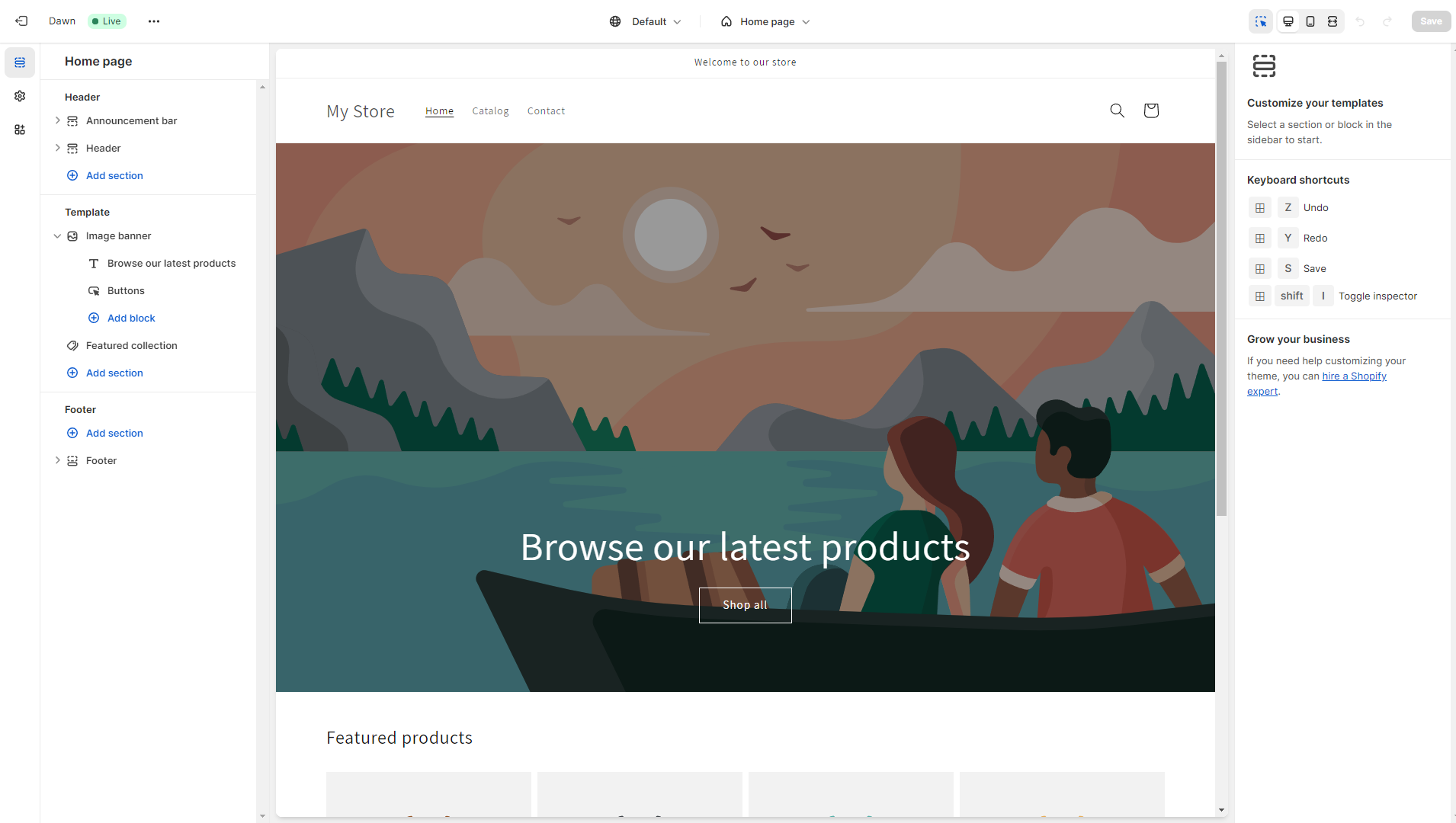
Adobe Portfolio’s editor, scoring 7.4, is designed for creatives to showcase their work. With it, users can easily create and customize their own professional-looking websites without needing to code. The editor allows for the integration of high-quality images and videos, offers a variety of responsive templates tailored to different creative fields, and provides seamless Adobe Creative Cloud integration, enabling users to directly import their work. However, it lacks advanced e-commerce features for selling work directly through the site, which may not be ideal for all users.
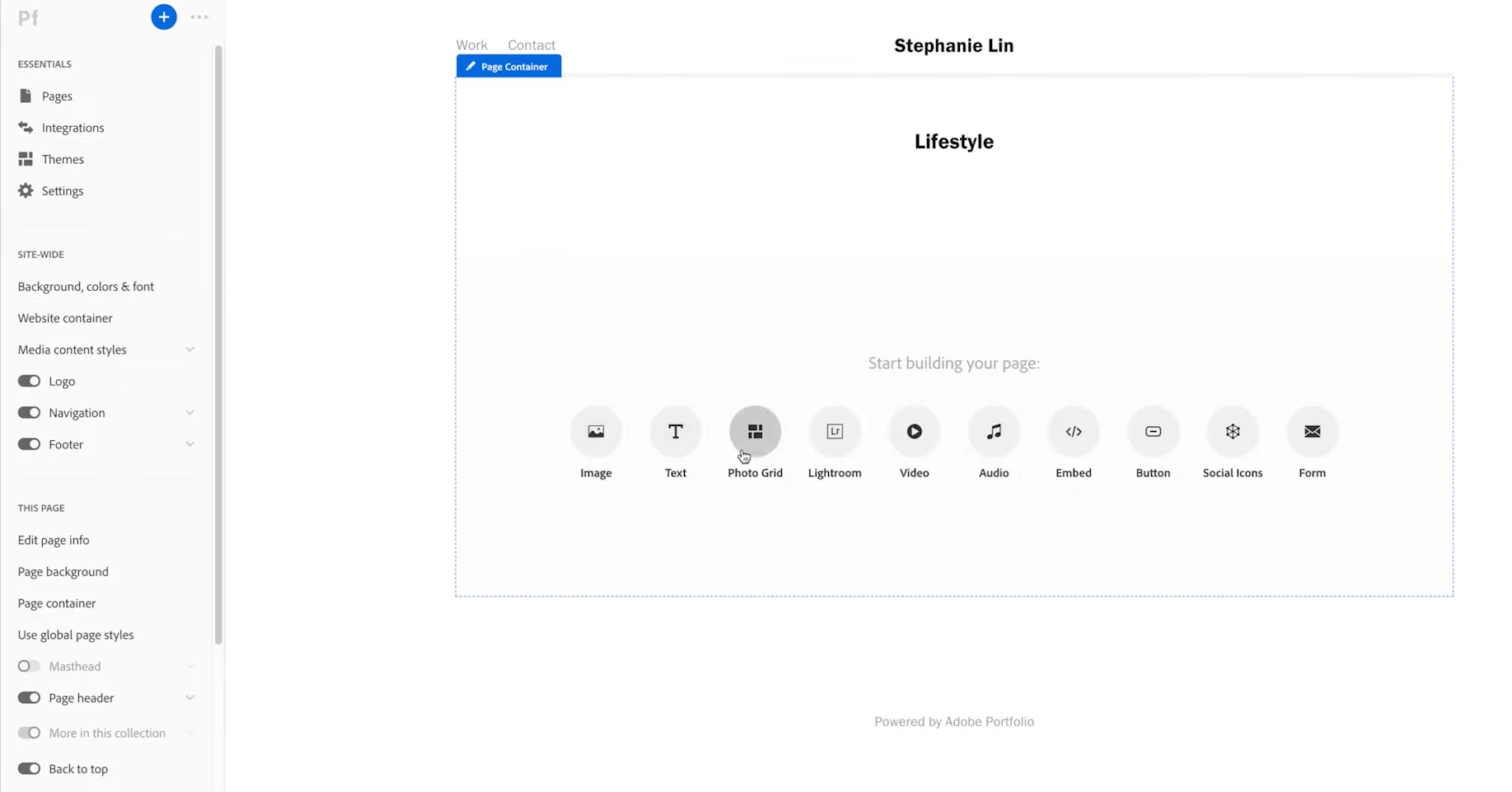
Mobile editor/app
 8.0
8.0
 0
0
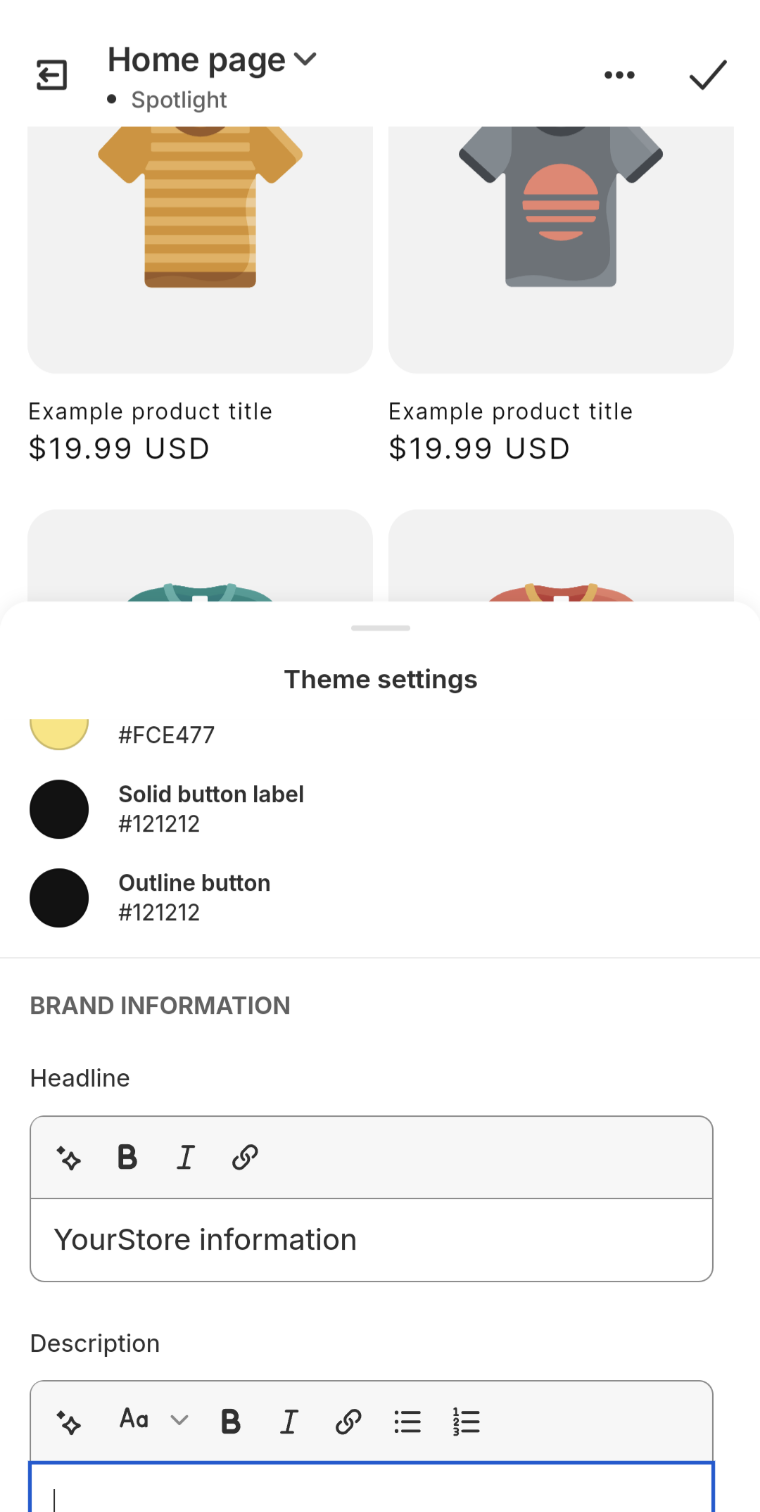
🏆
Winner: Shopify
. Shopify offers a mobile app that includes a user-friendly mobile theme editor. This feature allows users to customize their online store website directly from their mobile device, enabling the addition, removal, editing, and rearrangement of content on the store’s website. This offers convenient on-the-go adjustments to the store’s appearance and layout.
On the other hand, Adobe Portfolio does not have a mobile editor app, which limits its accessibility and convenience for users who prefer to make changes to their website on the go. Therefore, Shopify is the clear winner in this category due to its robust mobile editing capabilities.
Product testing options
Product Testing OptionsAssesses the options for trying out platform features before commitment.Score Components:
- Trial quality (40%): Extent and usefulness of the trial or free version.
- Feature accessibility (30%): How many features are available to test.
- Trial duration (20%): Length of the trial period.
- Ease of transition (10%): Smoothness of moving from trial to paid plans.
 8.1
8.1
 7.6
7.6
Overall Result
:
Shopify Wins
. Shopify scores 8.1, while Adobe Portfolio scores 7.6 in product testing options. Shopify offers a 14-day free trial with access to all features, including premium ones. On the other hand, Adobe Portfolio also provides a trial version where users can explore all features and even create a portfolio website. However, users cannot publish their website without subscribing to a plan. Both platforms offer a 14-day refundable period.

|

|
|
|---|---|---|
|
Free Plan |
No (14-day free trial) | No |
|
Trial Duration |
14 days | Yes |
|
Testing Premium Features |
All features during free trial |
Yes, but cannot publish without a plan |
Price
PriceLooks at the cost-effectiveness and value for money of each platform.Score Components:
- Plan value (40%): What each pricing tier offers.
- Transparency and clarity (30%): Clearness of pricing structures.
- Flexibility of plans (20%): Range of options to suit different budgets.
- Hidden costs (10%): Additional expenses not included in the plan.
 8.2
8.2
 7.7
7.7
Shopify offers a range of price plans for different needs, while Adobe Portfolio’s pricing is more straightforward and bundled with other Adobe Creative Cloud services.

|

|
|
|---|---|---|
|
$0-$10 |
No offering at this amount. |
Creative Cloud – Photography ($9.99/month): Up to 5 Portfolio sites with fonts from Adobe Fonts, and with access to Photoshop and Lightroom and 20GB storage. Value for price: 7.0 |
|
$20-$30 |
Shopify Basic ($29/month): Unlimited products, 2.9% + 30¢ card fee with Shopify payments, Extra 2% gateway fee without Shopify Payments, Abandoned cart recovery, Automated sales tax, Digital products, POS Integration, 2 staff accounts. Value for price: 8.0 |
No offering at this amount. |
|
$50-$80 |
Shopify Standard ($79/month): Lower card fees (2.6% + 30¢), Gift cards, Professional reports, 5 staff accounts. Value for price: 8.5 |
Creative Cloud – All Apps ($59.99/month): Up to 5 Portfolio sites with the entire collection of Adobe creative apps, including Photoshop, Illustrator and InDesign, with 20 GB storage. Value for price: 8.5 |
|
$200+ |
Advanced Shopify ($299/month): Lowest card fees (2.49% + 30¢), Advanced report builder, Real-time carrier shipping, Up to 15 staff accounts Value for price: 8.8 |
No offering at this amount. |
location. As a result in rare cases the prices displayed here can differ from the ones you see on their
websites.
Hosting quality
Hosting
qualityExamines the reliability and performance of the hosting solutions.Score Components:
- Uptime (40%): Consistency and reliability of website availability.
- Speed (30%): Loading times and performance.
- Bandwidth and storage (20%): Sufficiency of resources provided.
- Data centers (10%): Quality and distribution of hosting infrastructure.
 9.0
9.0
 7.0
7.0
Winner: Shopify
. Shopify offers proprietary cloud-based hosting with a 99.99% uptime guarantee and data centers in five locations globally, making it a more reliable choice for hosting. Adobe Portfolio also offers hosting, but does not provide uptime statistics or an uptime guarantee, and has fewer data centers.

|

|
|
|---|---|---|
|
Do they offer hosting? |
Yes, included in all paid plans |
Yes, included with built-in myportfolio.com domain and 20GB of cloud storage |
|
Data Centers: |
5 globally: USA (Ashburn, Virginia; Santa Clara, California), Canada (Toronto, Ontario), Ireland (Dublin), and Singapore |
3 globally: US, Ireland and Japan |
|
Type of hosting: |
Proprietary cloud-based hosting |
Cloud Hosting |
|
Uptime: |
99.99% |
Adobe Portfolio does not publish its uptime statistics |
|
Uptime Guarantee: |
Yes, 99.99% |
No |
Website Speed Optimization
Website Speed OptimizationEvaluates optimization of website loading timesScore Components:
- PageSpeed Score (30%): Google’s score indicating performance optimization.
- Loading Time (30%): The average time until a website is fully interactive.
- Mobile Optimization (15%): Optimization effectiveness for mobile devices.
- Resource Optimization (15%): Optimizing images, scripts, and other heavy resources.
- CDN Usage (10%): Use of CDN to enhance speed across geolocations.
 7.8
7.8
 6.2
6.2
🏆 Winner: Shopify
Both Shopify and Adobe Portfolio place a high priority on website performance and page speed, with Shopify focusing on app efficiency and theme optimization, and Adobe Portfolio emphasizing image optimization and SEO and Meta Tag Configurations. However, Shopify gets the edge when it comes to website speed optimization due to its higher score and specific strategies for Core Web Vital improvements.

|

|
|
|---|---|---|
|
Focus |
App efficiency, Theme optimization |
Image optimization, SEO and Meta Tag Configurations |
|
Performance Tools |
Google Lighthouse, PageSpeed Insights |
Adobe Portfolio does not disclose any specific performance tools |
|
Key Strategies |
App efficiency, Theme optimization |
Image optimization, SEO and Meta Tag Configurations |
|
Load Times |
Varies widely, dependent on optimization |
Varies depending on specific design choices and content volume |
|
Page Speed Scores Range |
Scores vary; influenced by apps, images |
Varies depending on specific design choices and content volume |
|
Core Web Vitals Improvement |
Emphasis on LCP, FID, CLS improvements |
Adobe Portfolio does not disclose any information about its Core Web vitals improvements |
Shopify’s approach to enhancing site speed includes app optimization by removing unneeded app code, conditionally loading apps, avoiding immediate pop-up displays, and incorporating app functionality directly into themes. This approach leverages Shopify’s fast servers and CDN network to boost load speed. Shopify also suggests utilizing Google AMP for faster mobile page loads, although with some design compromises. Analysis of three Shopify sites showed a range of Shopify speed scores from 14 to 75, Google PSI scores from 8 to 80, and load times varying from 10.6 seconds to 2.3 seconds. Continuous maintenance and optimization are essential for keeping Shopify stores fast.
Adobe Portfolio, on the other hand, emphasizes image optimization and SEO and Meta Tag Configurations for speed optimization. However, it does not disclose any specific performance tools or information about its Core Web Vitals improvements. The load times and PageSpeed scores for Adobe Portfolio vary depending on specific design choices and content volume. Adobe Portfolio’s emphasis on simple portfolio websites should ensure good loading times and Page Speed scores. However, without specific information on Core Web Vitals improvements, it’s hard to compare it directly with Shopify in this aspect.
Get a head start on website creation with AI
Create a custom website tailored to your business needs 10X faster with 10Web AI Website Builder!
Plugins and integrations
Plugins and integrationsMeasures the range and effectiveness of additional plugins and integrations.Score Components:
- Variety of options (40%): Range of available add-ons.
- Integration smoothness (30%): Ease of integrating plugins into the site.
- Quality of plugins (20%): Functionality and reliability of the options.
- Custom integration capabilities (10%): Support for custom or third-party integrations.
 8.7
8.7
 6.7
6.7
🏆 Winner: Shopify.
With a score of 8.7, Shopify offers over 8,000 apps in its App Store, covering a wide range of functionalities. These apps enhance ecommerce by offering advanced sales, marketing, and payment options, among others. Key Shopify integrations include Oberlo for dropshipping, Klaviyo for email marketing, Yotpo for reviews, and many more.
Adobe Portfolio, scoring 6.7, integrates with several Adobe services like Behance, Adobe Lightroom, Adobe Stock, and Adobe Fonts. These integrations are designed to enhance user experience by allowing seamless sharing, updating, and showcasing of creative work. However, compared to Shopify, Adobe Portfolio offers fewer plugins and integrations, making Shopify the winner in this category.
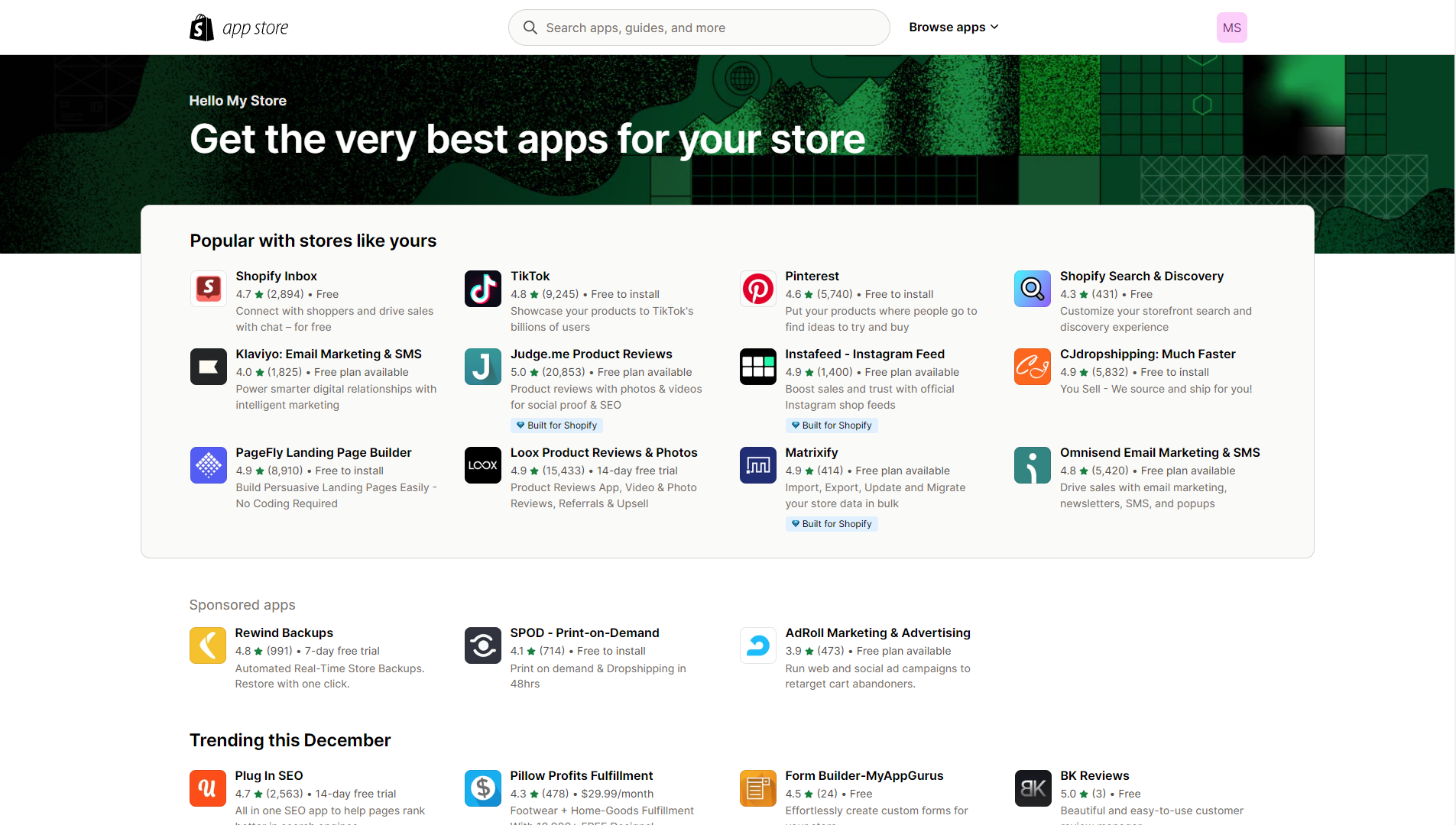
Marketing Features
Design FunctionalitiesRepresents how well each platform allows for creative design and customization of websites.Score Components:
- Template Variety (30%): Range and quality of design templates.
- Customization (30%): Flexibility and options for design alterations.
- User Interface (20%): Ease and intuitiveness of the design process.
- Responsiveness (10%): Adaptability to different devices and screen sizes.
- Innovation (10%): Unique design features and tools.
 8.8
8.8
 3.7
3.7
🏆
Overall Winner: Shopify
. Shopify stands out for its comprehensive set of ecommerce-focused marketing tools. Adobe Portfolio, while offering basic SEO and social media integration, lacks in email marketing, blogging, and ads and promotions.

|

|
|
|---|---|---|
|
SEO Tools |
|
Basic |
|
Email Marketing |
|
|
|
Blogging |
|
|
|
Social Media Integration |
Advanced integration for selling directly on social platforms |
Limited integration |
|
Analytics and Reporting |
Detailed analytics for in-depth insights |
Google Analytics integration |
|
Ads and Promotions |
Google Ads integration; sophisticated ad campaign management |
|
Customer Support
Customer supportEvaluates the quality and availability of support options.Score Components:
- Response time (40%): Speed of support responses.
- Support quality (30%): Effectiveness and helpfulness of the support.
- Availability (20%): Range of support channels (phone, chat, email).
- Resource richness (10%): Quality of self-help and educational materials.
 8.6
8.6
 7.3
7.3
🏆 Winner: Shopify
. In the comparison of Shopify vs Adobe Portfolio, Shopify takes the lead with a customer support score of 8.6. Shopify offers 24/7 support through chat, email, and phone, ensuring that users can get help whenever they need it. The platform also provides clear tutorials, an extensive community forum, and a valuable marketing blog, making it easier for users to find solutions and grow their businesses.
Adobe Portfolio, with a customer support score of 7.3, offers a range of support options, including a comprehensive knowledge base, FAQs, live chat, and phone support. However, the emphasis is more on self-service help. While Adobe Portfolio provides adequate support for its users, it doesn’t match the round-the-clock availability and extensive resources that Shopify offers, especially for enterprise-level businesses.
Security
SecurityLooks at the platforms’ security measures and data protection.Score Components:
- Data protection (40%): Safeguards for user and customer data.
- SSL and encryption (30%): Implementation of secure connections.
- Compliance (20%): Adherence to industry security standards.
- Regular updates (10%): Frequency of security updates and patches.
 9.0
9.0
 8.1
8.1
🏆
Winner: Shopify
. Shopify’s security measures are more comprehensive, including secure infrastructure, encryption, limited access, data minimization, user control and transparency, two-factor authentication, regular audits, and a dedicated incident response team. Shopify also provides SSL certificates for data encryption and identity verification, and a built-in Web Application Firewall for threat filtering and blocking.
Adobe Portfolio, while offering basic security measures such as SSL certificates and the option to password protect the entire website or specific pages, does not provide as extensive a range of security features as Shopify. However, Adobe Portfolio does prioritize the security and privacy of user and customer data, implementing comprehensive data protection measures aligned with major regulatory frameworks.
AI Capabilities
AI capabilitiesMeasures the effectiveness of AI-driven features and tools.Score Components:
- Automation efficiency (40%): Impact of AI on streamlining processes.
- Personalization (30%): AI-driven customization for users or customers.
- AI-Assisted design (20%): Role of AI in website design and functionality.
- Data analysis (10%): Use of AI in interpreting user data and analytics.
 7.9
7.9
 0
0

|

|
|
|---|---|---|
|
Personalized Design |
|
|
|
SEO Optimization |
AI-driven recommendations for better search engine visibility |
|
|
Customer Behavior Analysis |
Advanced analytics to understand customer preferences |
|
|
Sales Predictions |
AI-powered sales forecasting tools |
|
|
Inventory Management |
AI tools to assist in efficient inventory handling |
|
|
Content Generation |
AI assistance in creating and optimizing site content |
|
🏆 Winner: Shopify
. Shopify, with a score of 7.9, utilizes AI mainly to enhance the ecommerce experience. Its AI features focus on customer behavior analysis, personalized shopping experiences, inventory management, and sales predictions.
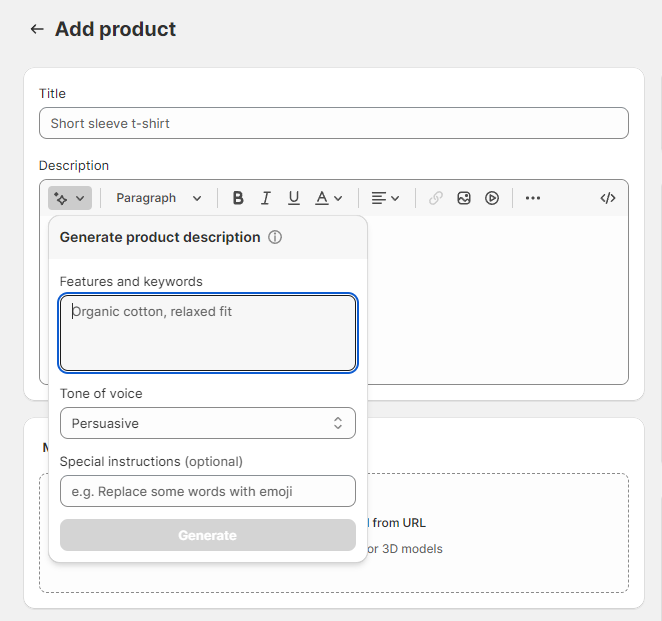
Adobe Portfolio, on the other hand, does not have any AI capabilities. This is a significant disadvantage for users who may benefit from AI-driven features such as content generation, SEO optimization, and customer behavior analysis.
User Management
User ManagementAssesses the platforms’ capabilities in managing user roles, permissions, and accessibility.Score Components:
- Role Customization (40%): Flexibility in creating and defining user roles and
permissions. - Ease of Management (30%): User interface and tools for managing users.
- Access Control (20%): Effectiveness of access control measures for different user
levels. - Scalability (10%): Ability to manage a growing number of users efficiently.
 6.5
6.5
 3.0
3.0
🏆 Winner: Shopify
. Shopify offers a more robust user management system compared to Adobe Portfolio.
-
Shopify enforces staff account limits based on plans, ranging from 2 to 15, with Shopify Plus offering unlimited
accounts. Collaborators with limited access are also an option. - Adobe Portfolio allows only one user to build and edit a website.
Shopify User Roles and Access Levels:
| Role | Description | Access Highlights |
|---|---|---|
| Store Owner | Full control over store | Manage products, orders, discounts, payments, apps, settings. Create and manage staff accounts. |
| Staff | Configurable access by owner |
Add/edit products, manage orders, fulfill orders, manage customers, update content. Access level can be customized by the owner. |
| Collaborator | Limited access for external partners | View and manage specific sections like blog or product categories. Cannot access full store settings. |
Adobe Portfolio does not provide user roles and access levels as it only allows one user to build and edit a website.
Additional Features

|

|
|
|---|---|---|
|
SSL Certificate |
|
|
|
Custom Domain |
|
|
|
Free Custom Domain Included |
|
|
|
International Domains |
|
|
|
Mobile Responsive |
|
|
|
Page Speed |
|
|
|
Website Builder Mobile App |
|
|
|
Convert a Website To An App |
|
|
|
Website Analytics |
|
|
|
Multilingual Sites |
|
|
|
Multiple Users |
|
|
User Feedback
Shopify’s slightly higher rating on G2 Crowd can be largely attributed to its specialization in ecommerce. Its comprehensive features, ease of use, and robust customer support cater specifically to online businesses, leading to high user satisfaction among those seeking a dedicated ecommerce solution.
Adobe Portfolio, while not available on G2 for direct comparison, is designed for creative professionals to showcase their work. Its integration with Adobe Creative Cloud and focus on visually appealing, responsive websites make it a popular choice among photographers, graphic designers, and artists. However, the lack of user feedback data on G2 makes it challenging to directly compare user satisfaction between Shopify vs Adobe Portfolio.
The making of this blog
We followed a clear, step-by-step process to write and research this article.
FAQ
Can I use Shopify or Adobe Portfolio for my online store?
Which platform is better for showcasing creative work?
What are the main differences in pricing between Shopify and Adobe Portfolio?
How do Shopify and Adobe Portfolio compare in terms of ease of use?
Can I manage multiple users with either Shopify or Adobe Portfolio?
Which platform offers better customer support?










